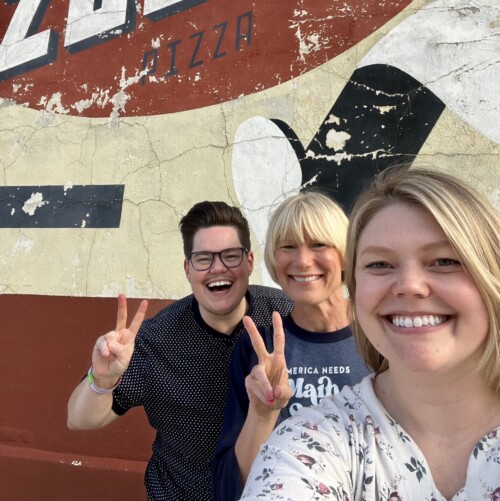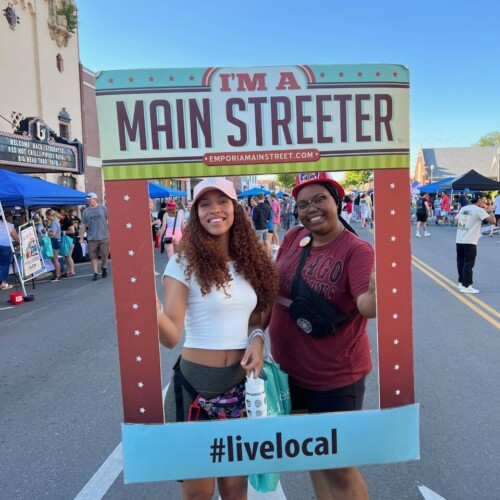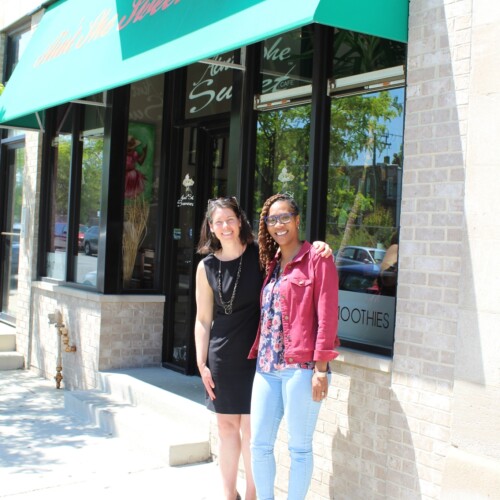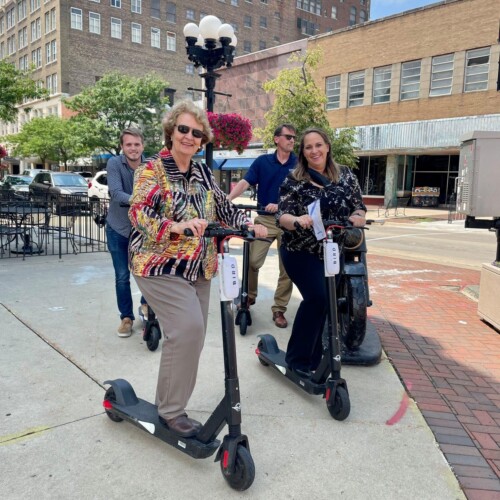September 18, 2018 | Main Spotlight: Main Streets Speak Up for National Parks | By Renee Kuhlman, Director of Policy Outreach at the National Trust for Historic Preservation |
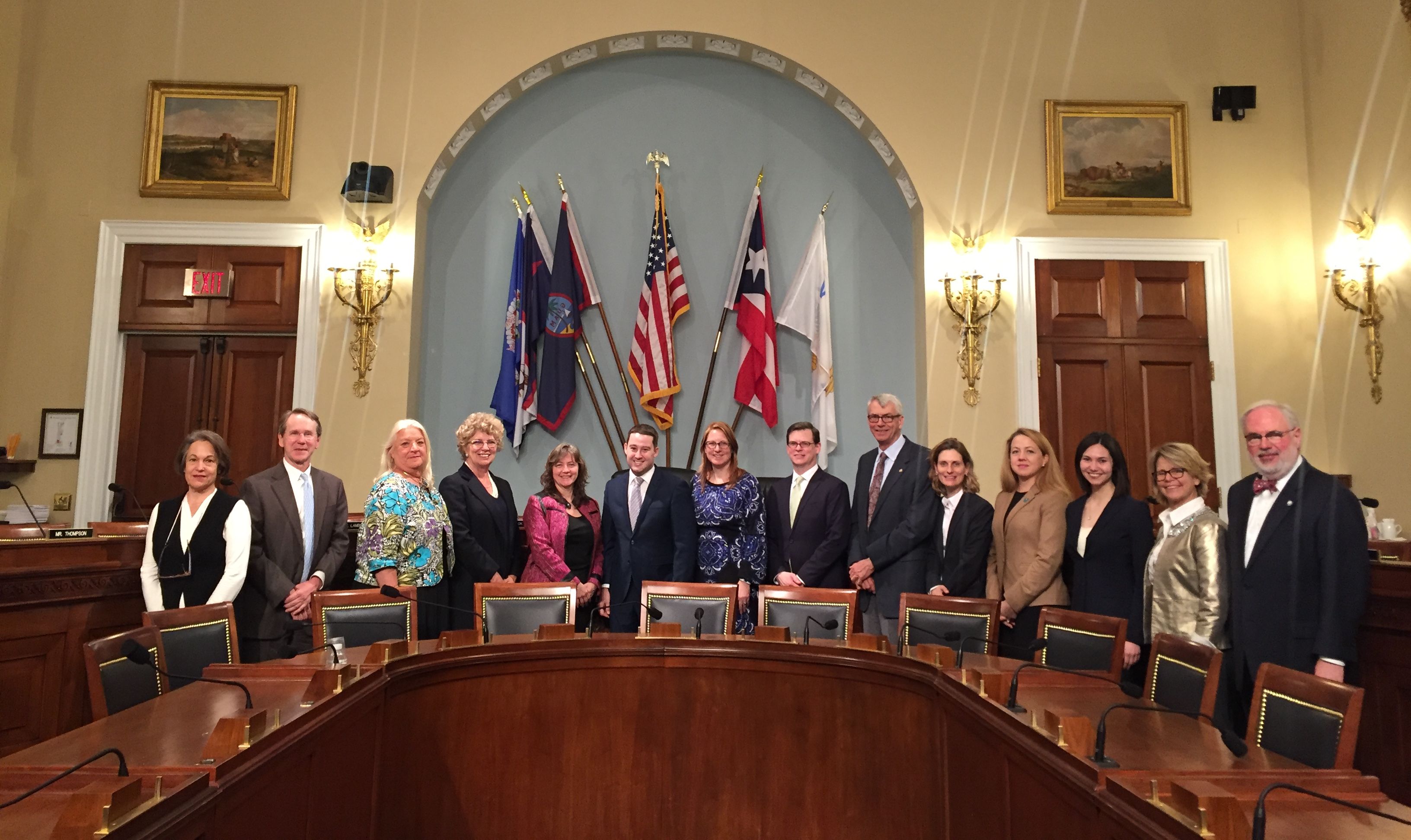 Jann Mirkov and Yvonne Knowles (3rd and 4th from the left) and other park advocates with Terry Camp, staff to the House Natural Resources Committee. Photo credit: Pam Bowman, Director of Public Lands Policy at the National Trust for Historic Preservation.
Jann Mirkov and Yvonne Knowles (3rd and 4th from the left) and other park advocates with Terry Camp, staff to the House Natural Resources Committee. Photo credit: Pam Bowman, Director of Public Lands Policy at the National Trust for Historic Preservation.
In 2017, the National Park System received an estimated 331 million visits. Visitors to our nation’s parks spent an estimated $18.2 billion in communities located within 60 miles of a park. Many Main Streets serve as gateways to national parks and find a significant portion of their tourism economy tied to the well-being of the nearest national park. Even Main Streets in other parts of the state feel the impact because heritage tourists usually visit multiple places while traveling.
Unfortunately, our parks have a great need for maintenance dollars – $11.6 billion in fact.
Over the past 18 months, many of our Main Street communities have spoken out on the issue of deferred maintenance in our national parks. With nearly 50 additional original co-sponsors, the House Natural Resources Committee Chairman Bishop (R-UT), Ranking Member Raúl Grijalva (D-AZ), and Representatives Simpson (R-ID) and Kilmer (D-WA) introduced the Restore Our Parks and Public Lands Act (H.R. 6510) last month, demonstrating significant support early in the process.
Meanwhile, the Restore Our Parks Act (S. 3172), was introduced by Senators Rob Portman (R-OH), Mark Warner (D-VA), Lamar Alexander (R-TN), and Angus King (I-ME) – and it is gathering several co-sponsors as well. Both bills provide dedicated funding (approximately $6.8 billion) to draw down the backlog of much needed repairs, 47% of which are historic assets that need repairing. It would be a significant step forward.
Recently, Main Street professionals and one mayor traveled to Capitol Hill to share how their economies are intertwined with the national parks. Along with Pam Bowman, who directs the efforts to preserve historic and cultural resources on public lands for the National Trust for Historic Preservation, I had an opportunity to interview these advocates on their experience.
How important are the health and well-being of our national parks to your Main Street?
Courtney Kramer, Lewiston (ID) – We are 10 miles from one of the many sites that make up Nez Perce National Historical Park. It’s a wide-ranging park that covers parts of Idaho and Montana. Visitors to the region play a critical role in the small communities where population is dwindling or stagnant. In addition to the impact tourists have while they are here (hotels, etc.), they also talk about their experience with their friends and they become our best marketing tool. It all starts with a national park in good condition.
Buffy Phillips, Waynesville (NC) – Main Street Waynesville is a very small town of 10,000 in the Appalachian Mountains in far western North Carolina. The Great Smoky Mountains National Park is the economic engine for the town and the county (population 60,000). We lost our industries but having these beautiful mountains kept us alive through the recession and continues to bring people here. Keeping the park attractive and safe is extremely important for our rural communities.
Yvonne Knowles, Homestead (FL) – Speaking of seasonal, in Homestead, Florida we are located between two national parks – 10 miles away from the Everglades National Park and nine miles from Biscayne National Park. We have a free trolley from downtown out to the parks from November through April. Tourists leave their cars downtown and come back downtown after visiting the parks. There are about six million tourists going through these parks a year so the impact on our economy is substantial. 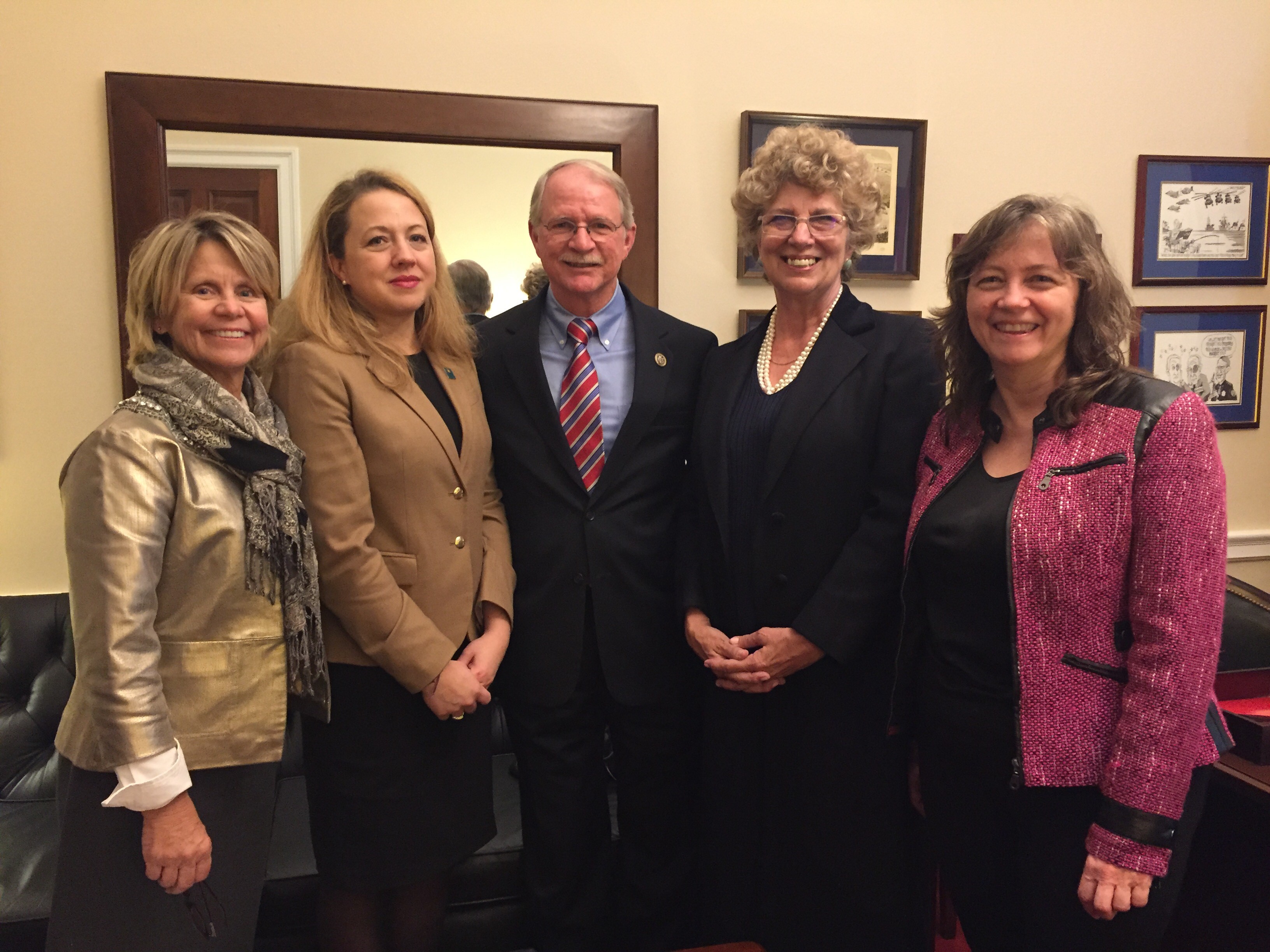
Congressman Rutherford (R-FL) meeting with Yvonne Knowles, Executive Director of Homestead Main Street (right) and Renee Kuhlman (far right), Cristine Rupp with Dade Heritage (far left) and Melissa Wylie (left), Director of Florida Trust for Historic Preservation about deferred maintenance in national parks. Photo credit: Renee Kuhlman
So what’s the relationship between the national parks and your Main Street?
Ray Scriber, Louisiana Main Street – Here in Louisiana, we have smaller national historical parks and many of them have places in the Main Street district. The parks are great partners because in all that they do, they promote the downtowns. They develop walking tours and provide tour guides that focus on our architecture and history. They play an important role in bringing people to the Main Street districts.
Jann Mirkov, Greeneville (TN) – We have the Andrew Johnson National Historic Site that has three separate pieces of property. Two are within the historic district and the third is an active cemetery. It’s been a long and good relationship mainly because of the visibility of the national park’s sites from our Main Street. While the park brings in 60,000 visitors a year into the community, we don’t capture them all.
Our park came to Main Street Greenville 14 years ago and said, “Hey, we need a couple of different things to bolster our visitation and to let people know about this community.” Main Street Greenville Tours came about through a cooperative agreement we have with the park. We now do walking tours daily along with mansion tours that reflect the time when President Andrew Johnson lived in our community.
LeighAnn Snuggs, Gaffney (SC) – In Gaffney, we are 11 miles to one park [Kings Mountain National Military Park] and 22 miles to another [Cowpens National Battlefield], and the trail that connects them [the Overmountain Victory National Historic Trail] runs through our downtown. We brought design elements like mural ad reader boards celebrating the Revolutionary War to get people to stay a little longer and spend a little money.
It’s sometimes hard to see because much of the deferred maintenance is with items like HVAC systems that visitors don’t readily see. What do you see in parks near you?
Malcolm Johnstone, West Chester (PA) – Here in West Chester, we are near Valley Forge [Historical Park]. It’s a great historic park with not much in the way of visible evidence of deferred maintenance. But when you get beyond the roadway and look closely, you see lots of evidence … deteriorated walking trails and signage you can’t read anymore. It is heavily visited and that takes a toll.
Jann Mirkov, Greeneville (TN) – We do what they can’t do. If the park can’t provide food at an event, we offer to help cover that expense. The recent addition of HVAC to Johnson’s Homestead will help preserve the artifacts for years to come.
What’s been the reaction to your educational effort?
Michael Lisle, Summerville (SC) – Summerville is a suburb of Charleston, SC. We contacted the park staff before going to DC. to find out the condition of their resources. They were so appreciative that we cared.
Jann Mirkov, Greeneville (TN) – Just want to throw this out—you don’t realize what you have in your communities. National Park Service employees love their work. They may live hours away and yet come from the ends of the earth to work at our parks. They are very dedicated to what they do. 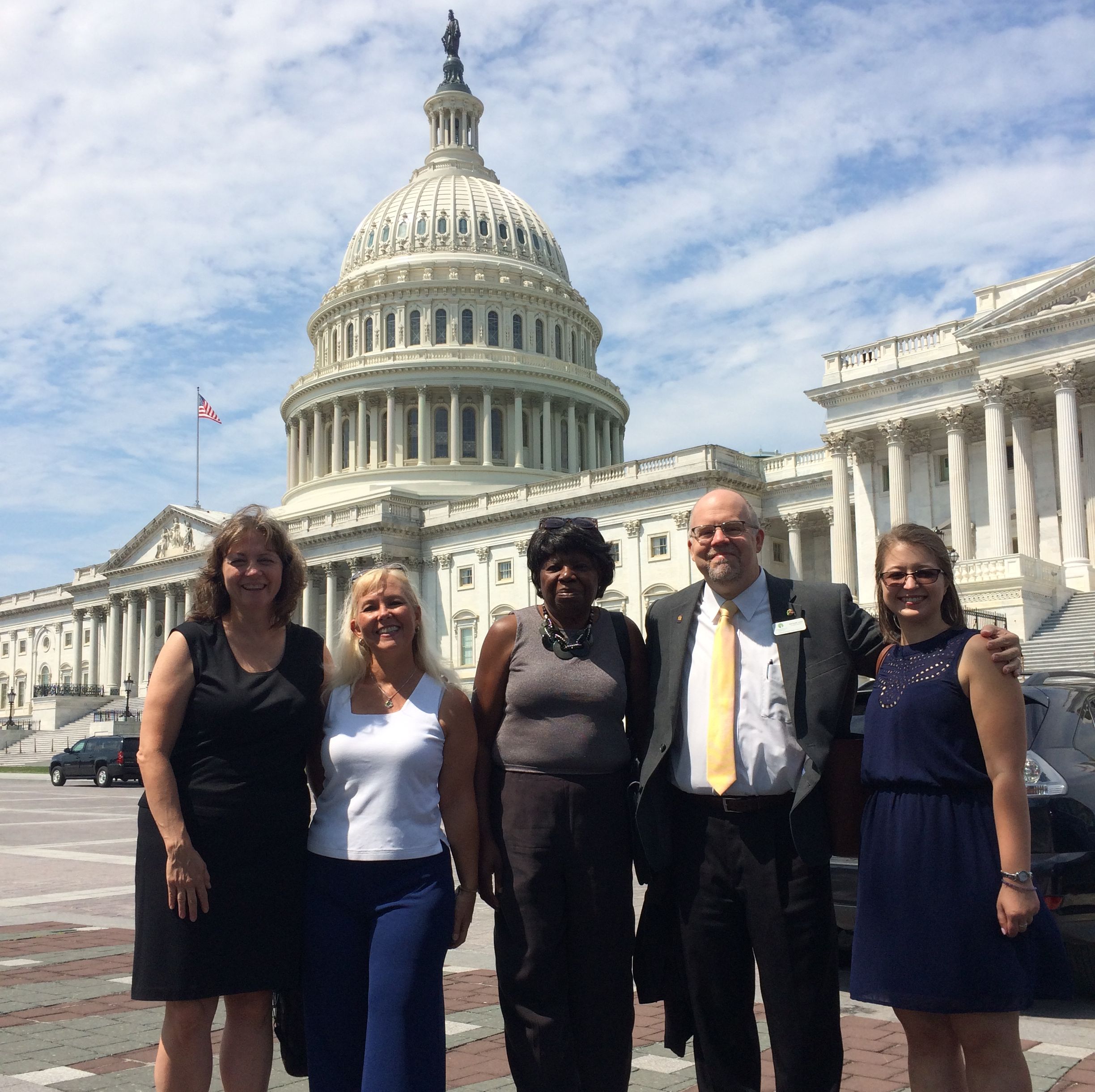
Walking across the Capitol lawn to meetings. (from left to right) – Renee Kuhlman (author), LeighAnn Snuggs (Get Into Gaffney), Jannie Harriot (South Carolina African American Heritage Commission), Michael Lisle (Summerville Dream) and Maria Mougridis (intern)
Sounds like Main Streeters! So was this your first time visiting Capitol Hill?
Malcolm Johnstone, West Chester (PA) – It was my first time. While it was nice for me getting to meet the office staff of my Representative, simply going around to all the offices just changed everything for me –not only on the federal level but also on the state and local levels. I used to be hesitant to reach out and now feel very comfortable. I learned how to have a good relationship with an elected official and with their staff, how to hone my message.
I think they [members of Congress] see Main Street as the folks who are getting things done and they want a problem they can fix. We are getting a new Representative and I believe the new person will depend on us [Main Street] as teammates.
What was unique about the Main Street perspective that you shared?
Buffy Phillips, Waynesville (NC) – As we sat in our group and thought through what each of us was going to cover, we realized that Main Street was the emotional part that grabbed their attention.
Jann Mirkov, Greeneville (TN) – Our visit was the same day the Honor Flight happened. While we were at the airport watching people walk by, I wondered how many of those veterans had plans to be buried in a national cemetery like the one in our Main Street. We are talking about more than the just the buildings and the facilities, it goes deeper than that.
What lessons have you learned through the experience?
Yvonne Knowles, Homestead (FL) – I learned a great deal. It’s important to be friendly and positive. We’re not doing a sales pitch but creating a personal relationship with our congressional offices.
Hyrum Johnson, Mayor, City of Driggs (ID) – Our Main Streets collectively represent the most beautiful parts of our country. As an elected official, I am here to represent all people and its true at all levels. Our elected representatives need to hear from us so don’t be afraid to speak up. Don’t be afraid to vocalize your view point.
Kevin Rogers, West Branch (IA) - I think all Main Street directors should go through something like this at one point and time. It was a wakeup call in some ways. Some [offices] knew about Main Street but some didn’t know about our broad scope – that we’re here to build up economic vitality of the community using the historic assets … it was like “oh.”
Have you had any feedback from legislators since your visits?
Kevin Rogers, West Branch (IA) – I was called back the next morning to visit with Senator Joni Ernst. She asked about the intermingling between West Branch Main Street and the national park. I talked about the limited amount of resources and the need to build relationships to be successful. Now I meet with our park superintendent and the Hoover Foundation once a month. 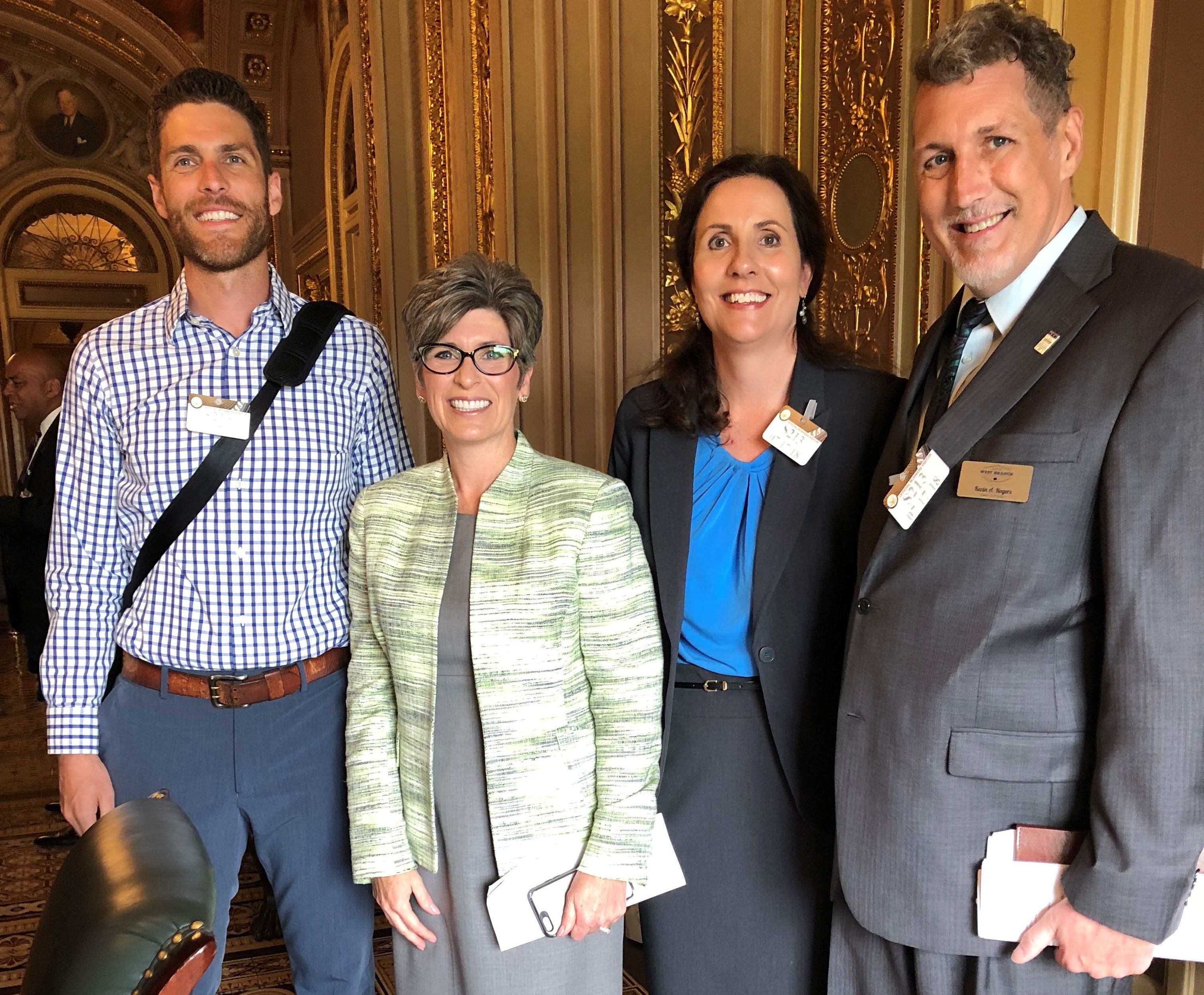
Senator Ernst (R-IA) discussed needed repairs in Iowa’s parks in the Capitol building with Preserve Iowa President Josh Moe, Valerie O. Reinke, Executive Director of Allamakee County Economic Development & Tourism, and Kevin Rogers, Executive Director of West Branch Main Street.
What was the biggest surprise to you during your visit to Capitol Hill?
Kevin Rogers, West Branch (IA) – I don’t think that all of the congressional members have visited the national park’s historic sites. We have the Christmas Past celebration which shows how the Hoovers lived Christmas. We used to get 300 people but with all the synergy between the park, the Foundation and Main Street, last year we had 3,100 hundred people in town. We have invited Senator Ernst out to see the synergy at work.
What advice would you give to your fellow directors?
Frank Quinn, Director of Preservation, Heritage Ohio (OH) – The staff in the congressional offices were appreciative that we had made the time to come and share what we knew with them. No one else is going to do this for our communities so we in Main Street need to help with education.
Kevin Rogers, West Branch (IA) – I recommend attending the morning coffees that the members host on Capitol Hill because it helps break the ice and it’s not a formal setting. I didn’t know that the [Member had] staff that was in the district, so folks could start there. Basically, Main Street has to take a deep breath and dive in.
Ray Scriber, Louisiana Main Street – This education really isn’t political. it’s talking about topics that will resonate with anyone in our country. If anyone is hesitant to get involved in advocacy for Main Streets because they think it’s a political thing, they can approach it from the heart and not from a political standpoint.
Call to Action: Help Educate Members of Congress
Main Streets don’t have to travel to Washington, DC to make a difference. In the spring, Doris Tillman, the executive director of Fort Pierce Main Street, Inc. asked her Member of Congress, Representative Brian Mast (R-FL-18), to support getting dedicated funding for our national parks. As a result of her educational effort, Representative Mast co-sponsored the National Park Service Legacy Act in April.
There are only a few months left in the 115th Congress and similar educational efforts can secure dedicated funding for our national parks that help bring millions of tourists to local Main Street communities.
- Sign a joint letter with other Main Streets and preservation organizations that will be delivered to Members in October
- Send an e-alert and ask Members to co-sponsor the Restore Our Parks and Public Lands Act (H.R. 6510) and Restore Our Parks Act (S. 3172)
Thank you to the following individuals who gave their time and leadership capacity to speak on behalf of historic resources in national parks. Our interviewees included:
- Hyrum Johnson, Mayor, City of Driggs (ID)
- Malcolm Johnstone, Executive Director, West Chester BID (PA)
- Courtney Kramer, Executive Director, Beautiful Downtown Lewiston (ID)
- Yvonne Knowles, Executive Director, Homestead Main Street, Inc. (FL)
- Michael Lisle, Executive Director, Summerville Dream (SC)
- Jann Mirkov, Executive Director, Main Street Greeneville (TN)
- Buffy Phillips, Executive Director, Downtown Waynesville (NC)
- Frank Quinn, Director of Preservation, Heritage Ohio (OH)
- Kevin Rogers, Executive Director, Main Street West Branch (IA)
- Ray Scriber, Director, Louisiana Main Street (LA)
- LeighAnn Snuggs, Executive Director, Get Into Gaffney Main Street (SC)
In Memoriam – Kevin Rogers 1962-2018
We were saddened to learn the Main Street community lost a valued colleague right before we went to print. Kevin Rogers passed away on September 14, 2018, leaving behind a loving husband, a large family, and many friends.
About the author:
Renee Kuhlman helps Main Street and preservation groups tell their stories to members of Congress on key issues including deferred maintenance in our nation’s parks and historic tax credits. In her position as Director of Policy Outreach for the National Trust for Historic Preservation, Renee delights in making connections that help promote the cause of historic preservation.
